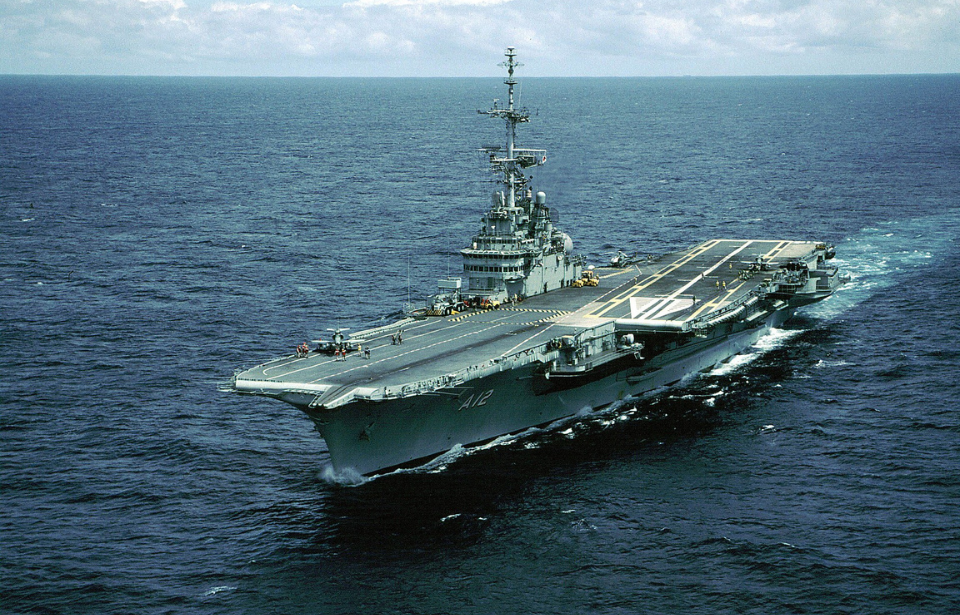The decommissioned Clemenceau-class aircraft carrier NAe São Paulo is causing headaches for the Brazilian Navy. Following her sale to a Turkish company in 2021, the service believed the asbestos-ridden vessel was someone else’s problem. However, she has since been returned to Brazilian waters, and the Navy’s plan to scuttle her in international waters has environmentalists calling for government intervention.
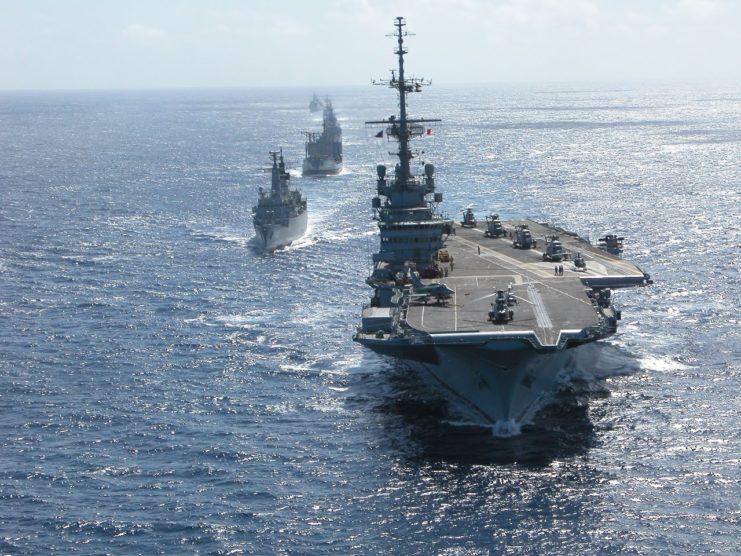
The 34,000-ton NAe São Paulo began her career in 1963 with the French Navy, under the name Foch. In 2000, she was sold to Brazil. The only aircraft carrier in the Brazilian Navy’s fleet, she became the service’s flagship and took part in a number of missions. Making up her fighter-bomber flotilla were 23 Douglas A-F1 Skyhawks purchased from Kuwait.
While intended to replace the World War II-era carrier NAeL Minas Gerais, São Paulo suffered a number of issues and couldn’t go more than three months without needing maintenance and repairs. While a number of upgrades were done, she was primarily used to train pilots on how to fly carrier operations toward the end of her career.
The demobilization and decommissioning of São Paulo was announced in 2017. Four years later, she was purchased at auction by Turkish company Sok Denizcilik for $1.8 million. According to the company, the aim was to recycle the vessel, dispose of any toxic materials and sell the non-toxic metal.
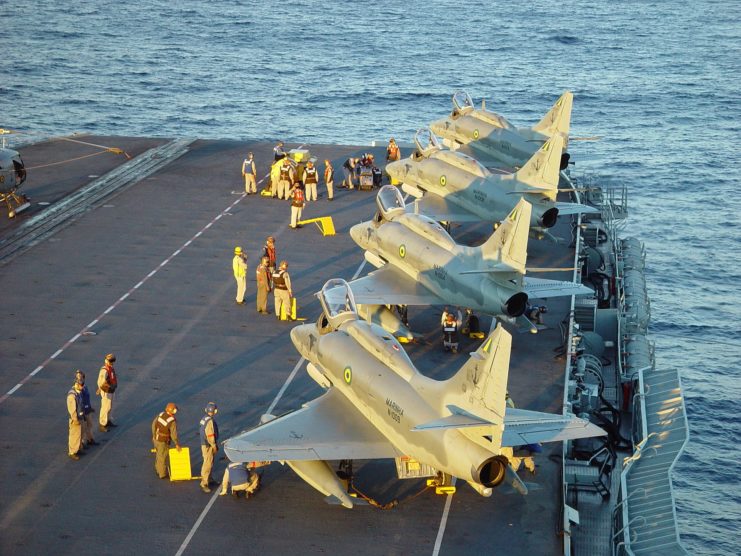
It’s therein where the issues arose. The NAe São Paulo was constructed at a time when Asbestos, a once-common fire retardant, wasn’t known to be a carcinogen. As such, the vessels within the Clemenceau-class, including São Paulo, were built with tens of tons of the material.
The class’ lead vessel, Clemenceau, was scrapped in Britain, with a survey of the vessel finding an alleged 45 tons of asbestos aboard. Inspectors have tried to claim that São Paulo has far less – around 10 tons – something environmentalists contest. In response, the Brazilian Navy said much of the material had been removed, but failed to provide proof of such work.
On top of that, compartments onboard the ship have accumulated unsafe levels of gas within. As well, a number of dangerous materials – fuel stores, electrical wiring and paint – are also still present.

Following the sale of the NAe São Paulo to Turkey, environmentalists staged protests both within the country and worldwide. When the aircraft carrier began her journey across the Atlantic Ocean in August 2022, the outcry had grown to a point where Turkish officials requested the Brazilian Navy provide a new inventory of the hazardous materials aboard the ship.
Unsatisfied with the response, the government canceled the import permission.
By this point, São Paulo had traveled as far as Gibraltar and was forced to turn around. However, when she returned to Brazilian waters that October, the Navy ordered her crew to remain off the country’s northeastern shore, despite her needing to undergo maintenance.
It appears the protests had reached coastal towns and cities, with local officials telling ports to not accept the aircraft carrier. For reasons that still remain unknown, the Brazilian Navy refused to accept the NAe São Paulo at its own ports. As such, she and her tug were forced to keep sailing around in circles off the coast.
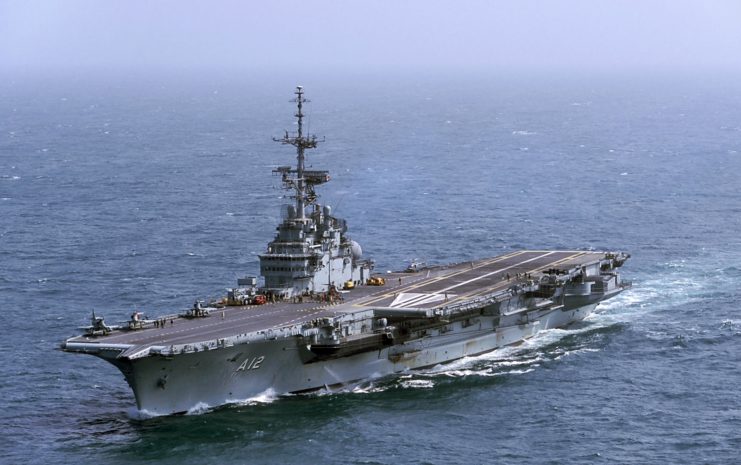
At a meeting held in December 2022, Brazilian officials ordered the vessel move 200 miles offshore, as her deteriorating state was raising concerns over her sinking and causing a navigational hazard. A month later, the Navy announced the aircraft carrier would be scuttled because of “deteriorating hull buoyancy conditions and the inevitability of spontaneous/uncontrolled sinking.”
The plan is to use explosives to sink São Paulo in international waters.
The decision has caused further outcry from environmentalists, who claim that scuttling the aircraft carrier will not only cause irreparable environmental damage, it also goes against international law. Under the Basel Convention on the Control of Transboundary Movements of Hazardous Wastes and Their Disposal, countries are required to re-import any and all toxic waste they’re unable to export.
In response, the Brazilian Navy said that, despite no longer being the vessel’s owners, officials have been following the case. It added that the owners – Sok Denizcilik – have not fulfilled the necessary requirements for her to receive docking permission.
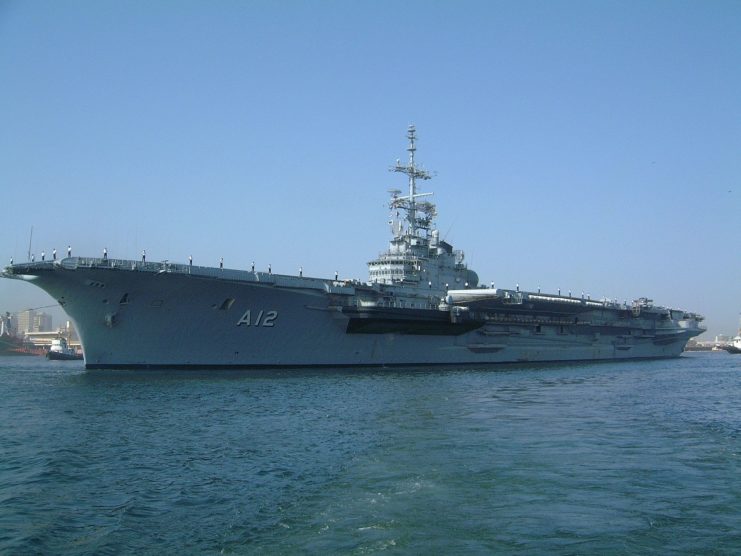
In terms of the environmental impact of scuttling the NAe São Paulo, Brazil’s environmental agency, IBAMA, told The New York Times that the vessel’s chemicals and toxic material could deteriorate ecosystems, cause damage to the ozone layer and result in the deaths of marine wildlife.
More from us: Anthony Hopkins to Star in Television Adaptation of ‘Those About To Die’
According to reports, Brazil’s public prosecutor has filed a civil case against the country’s Navy. In it, they’ve asked a federal court to order the immediate halt to the sinking of São Paulo.
